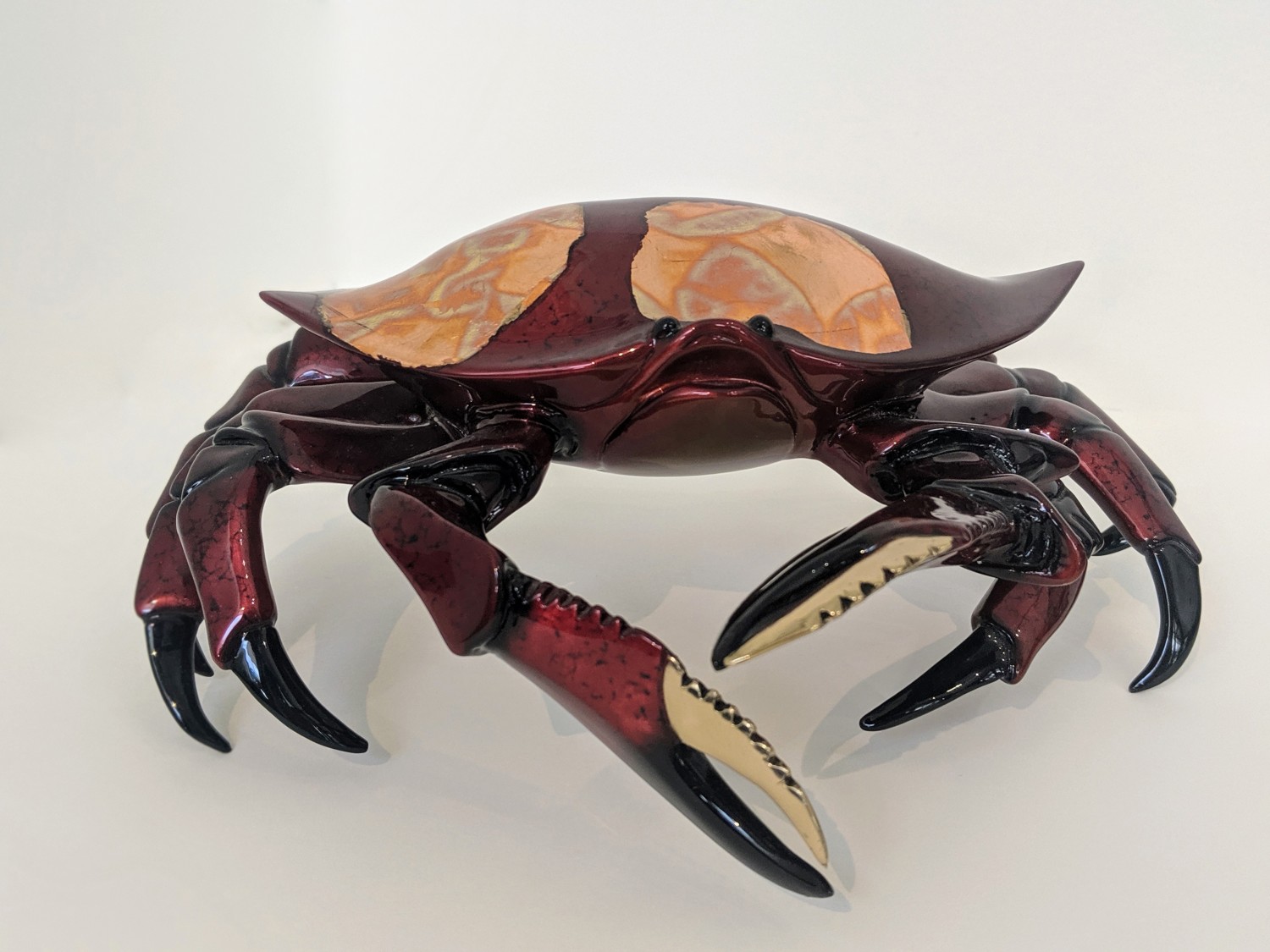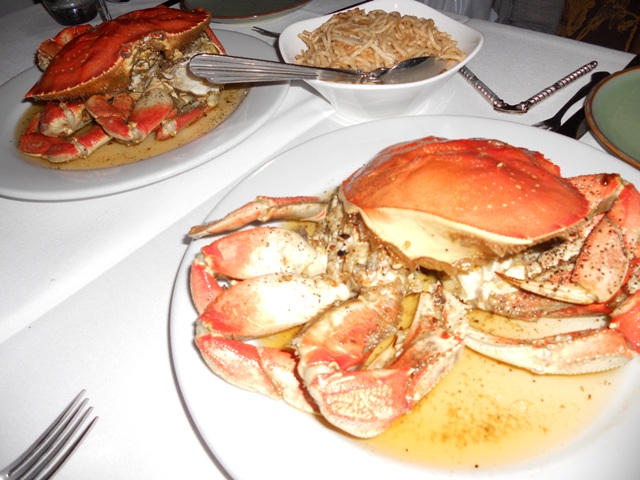

Adding to the challenge, king crabs are bottom- dwellers that lurk at depths of 400 feet. Fishing boats and their crews head into frigid seas off Alaska and its Aleutian Islands in late fall and winter to face waves that can tower more than 40 feet.

These stars of Deadliest Catch on the Discovery Channel are a source of peril. Season: Dungeness crabs are available much of the year, thanks to different seasons in California, Oregon, Washington, British Columbia and Alaska.
#Dungeness crab vs blue crab crack
“My favorite way to eat them is to boil them up, crack them and eat them,” says French. Dishes might be stir-fried, incorporating fermented black-bean sauce, or ginger and scallions. Crab-leg meat can cost about $100 per pound, compared with $30 per pound for a mix of legs, body and claws.ĭungeness recipes are often influenced by the sizeable Asian (and crab-craving) communities along the West Coast. “The legs have a cleaner, more delicate taste.” “Body meat is flakier and more buttery,” he says. Even more important to impatient diners: Dungeness crabs carry about 25 percent of their weight as meat, compared with 15 percent for blues.įound along the west coast of North America, from Alaska to Santa Barbara, California, Dungeness crabs get their name from a fishing village on Washington’s Strait of Juan de Fuca (the community derives its moniker from a headland in England).Įach part of the crab delivers a different taste profile and texture, says Andrew Truong, co-chef and co-owner of Michelin-starred Terrapin Creek restaurant in Bodega Bay, an epicenter for California’s Dungeness fishing fleet. Soft shells come to market from May to Labor Day.īurlier than their blue-crab cousins, Dungeness crabs can tip the scales at more than four pounds. “But fall is best-they’re big and meaty,” says Candy Thomson of the Maryland Natural Resources Police. In the Chesapeake Bay, the season runs from April to mid-December. Season: Crabbing takes place year-round in the Gulf of Mexico. They’re particularly sought after in this soft-shell state, and it’s the only time female crabs mate. Within two to four days, their exterior stiffens to fit their new size. It’s the magic potion of Chesapeake Bay kitchens.Ībout 25 times in their lives, blue crabs shed their hard exoskeletons and gradually expand to larger proportions. Blue-crab cookery often involves Old Bay Seasoning, a blend that includes dry mustard, red-pepper flakes, nutmeg, cardamom and more. Each morsel is dunked in melted butter spiked with a squeeze of lemon. That’s exactly how people enjoy them at casual restaurant shacks that dot the Chesapeake Bay: steamed or boiled, piled high on newspaper, thwacked with small mallets, the carcass then probed with tiny forks. While their season isn’t sharply defined, blue crabs seem best allied with summer and leisurely eating on ocean-view decks. The largest specimens measure nine inches in diameter. Their scientific name-Callinectes sapidus-translates as “savory beautiful swimmer,” which foreshadows their gourmet glory. Named for their azure-hued claws, blue crabs are native to the Gulf of Mexico and Atlantic coast, including the famed Chesapeake Bay. “But it’s delicious and lends itself to a slow, conversational dinner.” “You do have to work it,” says Lori French, president of Central Coast Women for Fisheries, and also a wife, mother and daughter-in-law of Dungeness crab fishermen. The fussiness of nutcrackers and teensy forks notwithstanding, the meal is worth it. And despite crab’s sweetness, a four-ounce portion packs just 120 calories. Each side proclaims its crab the sweetest.īlue, Dungeness and king crabs all rate as sustainable “best choices” or “good alternatives” on the Monterey Bay Aquarium’s Seafood Watch list. Blue-crab fans label Dungeness flavor as insipid, Dungeness loyalists lament that blues require too much work for too little meat, while everyone complains king crab is too expensive.
#Dungeness crab vs blue crab series
These species generate more rivalries than World Series contenders. The world holds approximately 6,800 species of crabs, but blue, Dungeness and Alaskan king prevail on American platters. Its plump, pearlescent and (granted) hard-to-pick-out flesh mingles briny ocean with earthy sweetness.

Hard on the outside, yet lushly yielding within, crab is the perfect metaphor for hidden opportunity. Astrologers characterize those born under the zodiac sign of Cancer (a crab) as prone to hide in their shells.īut food lovers know the truth. Its pinching claws and scuttling gait give rise to the description of a grouchy person: crabby.


 0 kommentar(er)
0 kommentar(er)
